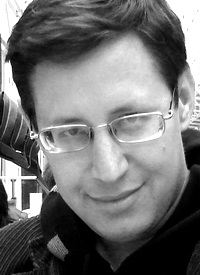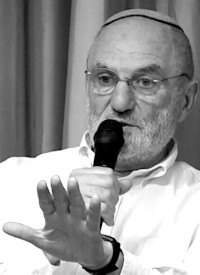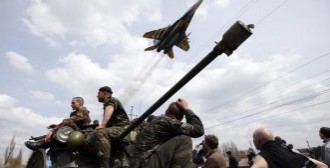
The newly elected president of western Ukraine is deepening the disastrous course to civil war of his interim predecessor. Within hours of his election on May 25, Petro Poroshenko ordered jet fighters, helicopter gunships, artillery and snipers to back fascist stormtroopers from western Ukraine in attacking the airport and surrounding neighbourhoods in Donetsk in the east, the country’s fifth-largest city.
Right-wing militias and army units also resumed shelling of the city of Slavyansk following the election. It lies north of Donetsk. Among the targets struck by the shelling were a primary school, a children’s hospital and houses. The Associated Press reported:
In recent days, Ukrainian troops have been using mortars to try to retake Slavyansk, causing civilian casualties and prompting some residents to flee. The tactic has produced few immediate results other than deepening distrust toward the government in the city and instilling general fear.
“They are shooting at us from grenade launchers. We hear explosions. The windows of our house are shaking”, said Olga Mikhailova, who said she was leaving Slavyansk for the safety of her family. “I have four children. It is terrifying being here, because I am afraid for their lives.”
The assault in Donetsk aimed to dislodge self-defence forces that had earlier secured the airport. Fighting lasted several days. Dozens of self-defence fighters and local citizenry died in the attack.
Casualties on the attacking side were not reported in most western media. Alexander Borodai, prime minister of the Donetsk People’s Republic, told the New York Times, “Our losses are serious. But our opponents’ losses are not less, and maybe even more.”
At the bus station near the airport during the attack, locals voiced their anger at the Kyiv regime for what they called a military attack on their homeland. “They call us terrorists but they are the ones who have come to our home, our land, to fight”, said Vadim Voit, a driver. He took part in a battle against Ukrainian soldiers last week in Volnovakha, south of Donetsk.
“Kiev is just not listening to us”, he said. “We can’t make peace with them now.”
A new escalation occurred on June 2 with a bombing attack by fighter aircraft on the central administrative building in the city of Luhansk. Russia Today reports five deaths and many injured.
The attack followed heavy fighting in the early morning at a nearby border control complex that pro-autonomy rebel fighters tried to seize. Kyiv used fighter aircraft to defend the complex. Luhansk lies 20 kilometers from the Russian border.
A commenter to a Russia news service site wrote, “I'd be curious to find out who are the pilots doing this. A few month ago, there were a lot of reports on how underfunded was Ukraine’s military--only a few planes, no trained pilots, no fuel or ammunition. Now they seem to have everything. Somehow I seriously doubt those pilots are Ukrainian, I am guessing Polish, maybe Georgian.”
The Wall Street Journal reported on March 25, “In Crimea, the Russian invasion captured a large part of Ukraine's air force and most of its navy without a fight. Democrat Senator Dick Durbin of Illinois said Ukraine's prime minister told the group that ‘we don't have anything that floats, flies or runs’.” [Note: The captured military equipment was returned by Russia to Ukraine. Source.]
Civil war course of Kyiv regime
Attacks against Slavyansk have been going on for many weeks. Kyiv regime forces suffered a heavy blow on May 29 when a helicopter carrying General Serhiy Kulchytskiy and 12 or 14 soldiers was shot down outside the city and all its occupants died. Kulchytsky was the head of training of Kyiv’s National Guard. That’s the stormtrooper force created in the wake of the secession of Crimea from Ukraine in March. It is composed of volunteers from right-wing and fascist political movements across Ukraine.
The formation of the National Guard has been prompted by the refusal of many soldiers in Ukraine’s conscript army to fire on fellow citizens. Since the beginning of Kyiv’s assaults in eastern Ukraine in April, there have been frequent reports of mutinies and other forms of refusal by army conscripts to fire on citizens. The frequency of soldier rebellions is growing.
In a news report on Sky TV in the UK, a leader of one of the shocktroop units said that once his forces have completed their murderous rampage in the east, they will carry their “revolution” back to Kyiv and “clear out” the government there.
Compulsory military service was ended in Ukraine 2013 but reinstated in May of this year. Following Crimea’s secession, many Ukraine army and navy personnel stayed in the region and joined the Russian armed forces.
May 22 was a very bad day for Ukraine soldiers. Residents in the adjoining towns of Rubizhne and Novodruzhesk mobilised to repel an incursion by an army unit that was poorly advised and led. At least nine people died on both sides and many were wounded.
On the same day, 16 soldiers were killed near Volnovakha, in what was widely reported as a case of friendly fire. Thirteen others died in fighting at Olginka, north of Donetsk.
Poroshenko has continued the inflammatory rhetoric of his predecessor, terming the broad movement for autonomy in eastern Ukraine as “terrorist” and saying he does not recognise the plebiscite vote in the Crimea Peninsula region in March that saw the region secede from Ukraine and join the Russian Federation.
The business tycoon has affirmed that he wants to sign an economic agreement with the European Union that would devastate the country’s industry and radically impoverish a large part of its population.
Poroshenko
Poroshenko was elected by a very wide margin over his rivals, but voter participation was low. He received 9,857,308 votes. In the 2010 presidential election, winner Viktor Yanukovych scored 12,481,266 votes while runner-up Yulia Tymoshenko received 11,593,357.
In the east, little voting took place in the two regions that have already declared autonomy from Kyiv—Donetsk and Luhansk. Elsewhere, the left-wing Borotba Union group reports in a May 27 statement that voter turnout was very low in Kharkiv and Odessa, the second- and third-largest cities in Ukraine.
Mainstream reporting in the West has shamefully downplayed or ignored the role and influence of rightist and fascist forces in Ukraine. It has failed to report the significance of the formation of the stormtrooper National Guard. It points to the low vote results for the Svoboda and Right Sector fascist parties in the presidential election; each scored around 1 per cent. But Svoboda controls three ministries of the Kyiv regime. Right Sector controls one and has deputy status in two others.
Rightist presidential candidate Oleh Lyashko received 8 per cent of the vote. His presidential campaign plastered Ukraine with posters screaming “Death to the occupiers!” referring to the fictional claims that Russians are occupying eastern Ukraine. (Curiously, Kyiv and NATO are simultaneously demanding that Russia withdraw military forces from its border region with Ukraine, which it has done, and step up border patrols to prevent possible movements of weapons and volunteer fighters across the border.)
Like other rightist leaders, Lyashko has organised his own National Guard militia to go on terror and killing sprees in the east. Only the limited experience and training of the militias and stormtroopers has limited the carnage they would otherwise have caused, though they were successful in seizing the Donetsk airport.
Worse violence will come if the Kyiv regime is not forced to pull back from its civil war. NATO is quietly providing training and other assistance to the army and stormtroopers. Poroshenko has appealed for more military aid from the US and his regime has entered into a formal, military training agreement with two NATO member countries—Poland and Lithuania.
Resistance
As the regime deepens its civil war, popular resistance is growing. News reports are full of examples of people in the east spontaneously organising to resist incursions by stormtroopers or the Ukraine army. In recent days in Donetsk, miners in the vast coal fields of the region have gone on strike to protest the war. As of May 28, miners in at least six mines in the Donetsk region were on indefinite strikes. That day, some 1000 of them marched through the centre of Donetsk condemning the Kyiv regime’s offensive (video of march here).
The movement in the east opposes Europe’s austerity program. It wants political autonomy that would cede powers over economic, social and cultural policy. It wants elected regional governors instead of Kyiv’s appointments of wealthy tycoons to the posts.
Workers in the east are demanding the nationalisation of enterprises that are owned by Kyiv supporters or threatened by Kyiv’s growing ties with austerity Europe. In mid-May, the railway system in Donetsk region was nationalised by a newly formed Ministry of Transport of the Donetsk Peoples Republic (DPR).
Prime targets for nationalisations are the enterprises owned by the industrialist Rinat Akhmetov. Earlier in May, his efforts to mobilise his workforce to oppose the autonomy movement failed miserably. Tim Judah, who reports from eastern Ukraine in The Economist and the New York Review of Books and who attended several of mass mobilisations attempted by Akhmetov, described the industrialist’s claims of vast support by his employees as fairy tales. Akhmetov’s stunts were nonetheless faithfully reported as good coin in Western media.
Alexander Borodai, the aforementioned prime minister of the DPR, is opposing nationalisation of Akhmetov’s enterprises. Borodai is a Russian citizen.
Since the overthrow of the elected president Viktor Yanukovych in February, a broad movement has arisen in eastern Ukraine that opposes the political and economic direction of the governing regime that came to replace him. Europe’s governments and financiers are demanding a rupture of existing relations with Russia and the implementation of an austerity program that would see the elimination of support for much of the coal, steel and other manufacturing industries in Ukraine and a further slashing of its already meagre social programs.
Workers in western Ukraine also stand to lose from Kyiv’s pro-Europe policies. But illusions in what closer ties to Europe could bring run high in the west. What’s more, the memories of grave, historic injustices at the hands of Russia during earlier times and dislike of the pro-capitalist governing regime of President Vladimir Putin in Russia provide fertile ground for anti-Russia propaganda that misrepresents or outright falsifies the true situation in the east. Western media shamefully contribute their own misrepresentations and falsehoods.
Poroshenko is a symbol par excellence of the old guard of post-Soviet Union Ukraine. He is part of the business class that rose to wealth and prominence through the privatisation and plundering of the state-owned economy of the Soviet era. He and his fellow robber barons have run Ukraine’s economy into the ground over the past 20 years.
Poroshenko served for nearly one year in 2012 as a minister in Yanukovych’s government. He served as a minister for two years in the government of Yanukovych’s predecessor, Viktor Yushchenko. The parliament that today backs Poroshenko is the same one that backed Yanukovych and then endorsed his overthrow by the rightist crowds who came to dominate the Maidan social protest movement.
Europe, the US and the ‘satellisation’ of Ukraine
Australian socialist writer Renfrey Clarke reported from Russia during the post-1991 transition from bureaucratic socialism to today’s state-directed capitalism. He recently wrote about the economic challenges facing Ukraine today:
Ukraine is now a poor country, much poorer in per capita terms than Russia, and in economic shambles. After decades of underinvestment and outright plunder, its industries are badly run down. Large numbers of enterprises, especially in the southeast, are loss making and survive only because they receive central government subsidies.
To the neoliberal mind, it's obvious what needs to be done. The market has to be allowed to work its magic. The subsidies must be ended. The enterprises that can't compete, and that can't attract investors prepared to modernise them, must be allowed to go under.
Substantially free trade with the EU will see Ukraine flooded by Western manufactured goods that are more sophisticated and of higher quality than the Ukrainian offerings. Meanwhile, the only Ukrainian products likely to command much of a market in the EU are bulk industrial commodities—mostly steel and chemicals and perhaps unprocessed foodstuffs, though how the latter will fare in the face of EU agricultural subsidies is not certain.
In the fantasies of the neoliberals (and of large numbers of currently deluded Ukrainians), free trade will induce Western investors to buy up Ukrainian enterprises, refurbish them and take advantage of cheap, local raw materials and labour to produce goods for profitable export to the west.
Or, the investors could buy up the enterprises, turn them into scrap and export them to the nearest metallurgical works to be melted down. That's been a persistent pattern in the post-Soviet countries.
Then there is another problem, potentially still more crippling for Ukrainian producers: free trade with the EU means that Ukraine will be required to raise protective barriers that limit trade with other post-Soviet countries, primarily Russia. The effect will be to cut deeply into exports of Ukrainian goods to the post-Soviet markets where these products have tended to be competitive.
Add to all this the predictable effects of austerity in slashing effective demand from the local population for Ukrainian goods, and broad sections of industry will disappear. In what used to be one of the most developed and prosperous regions of the Soviet Union, with substantial natural resources and a highly educated population, the already hard-hit masses will be reduced to penury.
Many Ukrainians may not yet see clearly today what closer integration with Europe will mean for them, but they aren't stupid. As these processes go forward, and as the effects come increasingly to be felt, popular resistance will mount. This will be a class-based resistance. It will weaken the country's traditional regional, cultural and ethno-linguistic divisions and hopefully see new forms of working class unity arise in their place.
Looking at the political prospects for the new president of the Kyiv regime, Clarke writes:
Poroshenko faces the challenge of imposing austerity on the working class in circumstances where the country's most important industrial region is already in armed revolt. That's a tall order.
He doesn't have the ability to conduct effective propaganda in the Donbass region [south-east Ukraine]. When he announces that subsidies for loss-making enterprises are to be ended, the demand for nationalisation will be in the forefront of workers' minds. The Donetsk Peoples Republic has already raised the prospect of nationalisations.
In the general climate of defiance of authority, it would be a logical, next step for workers to take over and occupy their enterprises. In a context of incipient civil war, the government lacks the means to stop this from occurring. Needing to defend their gains, militant workers can also be expected to join the armed insurgency and make it their own.
Autonomy demands are also being voiced by other regional or national groups in Ukraine, including the Hungarians and Rusyns in the southwest. These have received next to zero coverage in western press. There is fierce resistance to autonomy by Kyiv anywhere in the territory it claims.
Much has been made in Western press and by some left observers of the heterogeneous political outlook and political weaknesses of the autonomy movement in the east. Support for Russian nationalism and for outright secession from Ukraine is voiced by sections of the movement, though this is a minority viewpoint. The movement’s ties with the working class in western Ukraine are weak, even though workers in western Ukraine are threatened by the very same austerity that has propelled the east into revolt. Suggestions of secession in the east create further barriers to forging alliances across the east-west divide.
The autonomy movement and its appeal to workers elsewhere in Ukraine and in Russia would be strengthened by more citizen mobilisation and engagement in political and economic administration. Similarly, workers’ control of nationalised enterprises would draw sympathy and support for the movement. It would help ensure that the benefits of nationalisations and other radical, social measures would flow to workers and their communities.
Contradictions and shortcomings in the political movement in the east should be expected in conditions where for decades, workers and ordinary citizens have been excluded from democracy and citizen engagement. The deadly civil war now being waged against the movement, with NATO’s firm backing, makes conditions enormously more difficult. Indeed, the goal of the military intervention is precisely to weaken and destroy any movement towards a grassroots and working-class revolution.
The desires of the population in Luhansk, Donetsk and elsewhere in eastern Ukraine are crystal clear—they cast ballots in large numbers on May 11 for political autonomy and social justice. All but the most hidebound of Western reporters in the region acknowledge that support for autonomy is widespread and is growing with each Kyiv regime attack.
The people of Ukraine desperately need active international solidarity. Kyiv must be pressured to end the civil war in the east and accept political autonomy. NATO should end its military intervention. Political mobilisations against fascism are needed, and not only in Ukraine--the rise of the right-wing vote in many countries of Europe during the recent elections to the European Parliament shows that anti-fascist and anti-racist mobilisations are needed throughout the continent.
Sergei Kirichuk, a leader of the Borotba Union (Union of Struggle), spoke in an interview on May 21of the goals and challenges in eastern Ukraine today. He says his group and the rest of the authentic left in Ukraine were unprepared for the rapid growth of the fascist right in Ukraine. Borotba and other leftists have been driven underground by the violent rise of the right and the all-pervasive, anti-Russian propaganda, including in Kharkiv and Odessa. But Ukraine workers are nonetheless finding the means to resist.
“Here in the Southeast, people are fighting for their socio-economic rights”, says Kirichuk. “There is a very strong anti-oligarchic, anti-capitalist component in these protests.”
Kirichuk hails from western Ukraine and explains, “I can say with confidence that very many Ukrainians even in the country’s west are sympathetic with the struggle of the southeast. There are very many people discontented with the regime in the West too, but people are simply afraid to voice their opinion and stay silent because of the atmosphere of terror that reigns over there. At the same time, they look with hope at what is happening in the Southeast.”
Borotba issued a statement following the presidential election saying, “We do not recognise the outcome of these pseudo-elections ignored by the majority. We will continue the campaign of civil disobedience against the junta of oligarchs and nationalists.”
Awareness and solidarity in western Europe is slowly growing. In Germany, representatives of Die Linke (The Left) have spoken out in the German parliament against the fascist violence and NATO collusion in Ukraine. And on June 2, a public rally in London featuring Russian writer Boris Kagarlitsky will launch a new campaign, “Solidarity with the anti-fascist resistance in Ukraine”.
Roger Annis
1.06.2014
-
Історія
Африка и немцы - история колонизации Намибии
Илья Деревянко история колонизации Намибии>> -
Економіка
Уолл-стрит рассчитывает на прибыли от войны
Илай Клифтон Спрос растет>> -
Антифашизм
Комплекс Бандеры. Фашисты: история, функции, сети
Junge Welt Против ревизионизма>> -
Історія
«Красная скала». Камни истории и флаги войны
Андрій Манчук Создатели конфликта>>

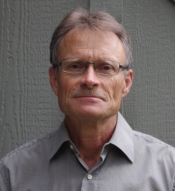
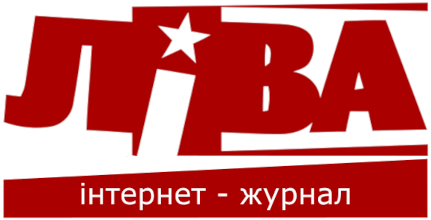










 RSS
RSS

